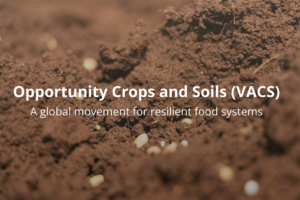Lone Badstue (CIMMYT gender and monitoring and evaluation specialist; third from left, bottom) talks with four coordinators of community-based seed production groups in Nepal (top, from right). Also present are Katrine Danielsen, Senior Advisor, Social Development and Gender Equity of the Royal Tropical Institute of Denmark (far left), and Kamala Sapkota, intern working in the Hill Maize Research Project (second from left).
Applying advanced technologies and reconciling dramatic growth in funding, staffing, and complex partnerships with the need to speed farmers’ access to options for better food security and incomes were the themes of discussion among more than 60 specialists in maize breeding, agronomy, socioeconomics, and diverse related disciplines who met in Kathmandu, Nepal, during 28-31 January 2013. “This was a great opportunity for old and new staff to get acquainted and help launch the vibrant evolution of our Program to meet clients and stakeholders’ needs,” said GMP director B.M. Prasanna. “The participation of colleagues from other programs and organizations was crucial, allowing us to identify and address logjams and potential synergies and continue our journey toward being an institution, rather than a mere collection of isolated projects.”
Over the four days, participants representing more than 20 nationalities heard presentations and debated improvements on phenotyping, breeding efficiency and genetic gains, seed production and delivery, use of doubled haploids, genomic selection, cropping systems and conservation agriculture, the Generation Challenge Program’s integrated breeding platform, breeding informatics and database management, gender, and interfaces with the CGIAR Consortium Research Programs MAIZE and CCAFS.
Nepal furnished a perfect setting for deliberations on maize and the valued role of national partners in our work. The crop accounts for more than 3% of Nepal’s GDP and some 20% of calorie intake, and is crucial for farmers in remote hill areas who struggle to advance amid changing climates, poor infrastructure and market access, and worsening shortages of labor. These and other issues were highlighted in a presentation by Dr. K.B. Koirala, Coordinator of the National Maize Research Program (NMRP) of the Nepal Agricultural Research Council (NARC), at the Council’s Khumaltar research station on 30 January. “The average land holding in the hills is half a hectare, and households typically spend 75% of their income on food,” said Koirala, who also made reference to the country’s long-standing partnership with CIMMYT, celebrated on its 25th anniversary in 2010.
Through our partnership with NMRP, maize productivity has increased more than 36% in the last three decades—around 3% per annum—based partly on the release of 24 improved varieties and hybrids, including the quality protein maize Poshilo Makai-1 (“nutritious maize” in the local language).
Visitors to Khumaltar also had an update on the Hill Maize Research Project, which as of 1999 and with funding from Swiss Agency for Development and Cooperation (SDC) and (beginning in 2010) the United States Agency for International Development (USAID), has worked with national research and extension partners, non-governmental organizations, and farmers to develop, test, and disseminate highyielding maize varieties, support seed production and marketing, and test and promote resourceconserving farming practices. “Because we target women and disadvantaged groups, more farmers have adopted improved varieties and practices and benefited,” said Guillermo Ortíz-Ferrara, CIMMYT maize breeder and HMRP leader. “To date we’ve reached nearly 50,000 households in the 20 hill districts.”
Because established companies generally do not market seed in hill areas, the HMRP has supported seed production and sale by 195 community-based seed production groups, most of whose members are women. Farmer-coordinators from 10 districts in the mid-hills of Nepal shared their experiences with meeting participants at Khumaltar, citing their interest in “graduating” to formal status as seed companies and mentioning marketing and transport as key constraints. “The Hill Maize Research Project has completely changed our mentality from seeing maize as only a food crop to viewing it as something we can sell,” said one of the farmers.
At the end of the meeting B.M. Prasanna gave special thanks to all CIMMYT-Nepal office staff, as well as to G. Ortiz Ferrara, for the excellent logistical support provided in the organization of the Annual Global Maize Program meeting.
 Nutrition, health and food security
Nutrition, health and food security 

